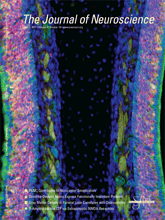Increasing evidence supports schizophrenia may be a neurodevelopmental and neurodegenerative disorder. Fluoxetine, a selective serotonin reuptake inhibitor, has been reported to have neuroprotective effects and be effective in treating neurodegenerative disorders including schizophrenia. The objective of the present study was to evaluate the effect and underlying neuroprotective mechanism of fluoxetine on the sensorimotor gating deficit, a schizophrenia-like behavior in a neurodevelopmental schizophrenic mouse model induced by MK-801, an N-methyl-d-aspartate glutamate receptor antagonist. On postnatal day 7, mouse pups were treated with a total seven subcutaneous daily injections of MK-801 (1 mg/kg/day), followed by intraperitoneal injection of fluoxetine (5 or 10 mg/kg/day) starting on postnatal day 14 in the MK-801-injected mice for 4 weeks. The sensorimotor gating deficit in mice was measured by prepulse inhibition (PPI) behavioral test on postnatal day 43. After the behavioral test, the protein expression of brain-derived neurotrophic factor (BDNF) was measured by western blot or ELISA in the frontal cortex of mice. Our results showed fluoxetine attenuated PPI deficit and the decrease of cerebral BDNF expression in the MK-801-injected mice. These results suggest that fluoxetine can be used to treat sensorimotor gating deficit in a neurodevelopmental mouse model of schizophrenia, and the attenuating effect of fluoxetine on sensorimotor gating deficit may be related to fluoxetine’s neuroprotective effect targeting on the modulation of cerebral BDNF.








